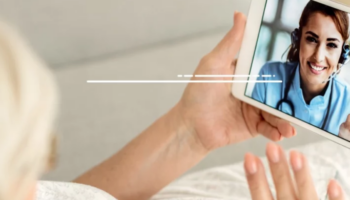
Seen as a way to attract empowered customers and to ease the burden on Contact Centers, Customer Self-Care is the new trend.
However, the concept is not new. It is only a slight exaggeration to say that a shop that posts a sign on the door showing its hours “informs” customers, without them having to go inside. In this case, the information is not really targeted to that specific customer. Like non-dynamic FAQs, product descriptions or the contact information on websites, signs on shop doors provide information about the company or its services and do not factor in the customer context (they just try to figure out what the customers want, based on where they are at time t).
An even less context-sensitive version is listing the hours in a newspaper, without taking into account the customer journey – in the literal sense.
These first two “stages” of Customer Self-Care require the customers to make an effort: it is up to them to find the information and determine whether or not it meets their needs. This method obviously doesn’t enable the customer to act directly on their journey.
|
Now imagine if a building management company sends a text message to the tenants of a building where an elevator has been reported out of service, basically saying that they know about the problem, that it’s being handled, and that the tenants will be kept informed so there’s no need to call the Tenant Services Department. Not only are the tenants reassured that the problem is being taken care of, so they don’t overload the Contact Center, but if they didn’t already know about the problem, they now do, (so they won’t come home laden down with groceries that they’d have to lug up all those flights of stairs).
Like all Self-Care interactions, the interaction is carefully prepared, planned and organized by the Company. The “Self” in Self-Care does not mean that the customers are left to their own devices, but that they are empowered by the Company to get the information they need, when they need it. And they may even be allowed to act directly on their data and their journeys.
For the Company, people are a core component of Self-Care.
It takes people to plan out the interaction, like the one mentioned concerning elevator breakdowns. In order to avoid overloading the Contact Center when an elevator breaks down, the process teams, the supervisor, the advisers, and even the tenants had to work together to determine that:
- The issue could occur frequently enough and would generate so many calls that it would be cost-effective to address it in advance,
- The issue could be detected via a smart unit in the elevators, which would send an alert to the building management software,
- This should trigger an action, in this case an automated text message sent by the call center to the tenants served by the impacted elevator(s),
- It should also trigger other types of internal actions, such as a message to a repair service and a request in the CRM to track the progress of the repair and continue to inform the tenants concerned.
Next, it is people who will interface between the customer and the information system. A Self-Care system works if and only if the interface between the customer and the information in the company’s database is capable, intelligent and persistent enough to ensure effective communication.
It is also people who will step in and take over for the Self-Care system if it can’t meet the customer’s needs, either because the response isn’t in the FAQ, the ChatBot couldn’t understand the customer’s question, the system doesn’t allow the customer to change an order that has already been confirmed, etc.
A Self-Care system must be able to identify its limits (in real time, but also later via reporting) and hand over to a real person at the right time. The Contact Center solution immediately provides the Adviser with all the customer’s past human interactions, the context, and some of the Self-Care interactions, so they can understand and meet the customer’s need.
Customer Self-Care is useful in providing fast answers to clear and simple requests, freeing up time for real people to handle complex and many-faceted requests which often require more empathy.
A Self-Care system must also display enough customer data to offer a useful service, while protecting the customer’s data privacy. 58% of customers would switch half or more of their spending to a provider that excels at personalizing experiences without compromising trust. (Source: Put Your Trust in Hyper-Relevance, Accenture, 2017)



